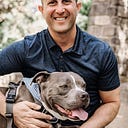When Will the Tides Turn for Fish? Wildtype Is Working on it
You’ve heard a lot about emerging companies making plant-based and other alternative meats and poultry, but sometimes not that much about their seafood counterparts, despite it being one of the most pressing needs. The alt-seafood industry is one of the most interesting and promising strategies in this space, so let’s take a deep dive.
Cultivated fish for the future
In October 2022, Business for Good podcast listeners enjoyed a conversation with Aryé Elfenbein and Justin Kolbeck, founders of Wildtype. The company asks us to envision a future in which we can consume all the salmon, tuna, and other fish we want — all with a delicious, natural taste — but without killing any living fish or other marine animals or the environmental and health concerns that accompany today’s fisheries industry.
This is the future Wildtype has dedicated itself to bringing into being for the past six years through its cultivated fish products. To date, Wildtype has raised $120 million in funding from investors like Leonardo DiCaprio and has created dozens of jobs.
Keeping people healthier while easing the strain on our oceans
Wildtype grows its cultivated seafood directly from real fish cells, bypassing the catching, killing, and preparation involved in ocean or farm fishery businesses. The company has created genuine salmon products that retain all the nutrition (including the protein and healthy fats) and rich taste of fresh-caught salmon from the sea. I was fortunate to try it both pre-pandemic and post-pandemic, and enjoyed it both times.
The one big difference between Wildtype’s fish products from wild-caught salmon is that they don’t contain mercury, microplastics, and other toxic items that continue to plague our oceans. They don’t contribute to the environmental degradation wrought by over-fishing either.
Environmental responsibility is a central part of the Wildtype ethos. The company is working with a mission to not only turn a profit but to turn around the harmful and unsustainable effects of traditional fishing methods on our planet.
Business savvy meets scientific know-how
As described in the podcast episode, Justin currently serves as Wildtype’s CEO. He previously spent half a decade with Strategy& as a consultant. Before that, he was in the United States Foreign Service, posted around the world in countries from Australia to Pakistan.
A graduate of the University of California-Berkeley, Justin also earned advanced degrees from the Yale School of Management and the Paris Institute of Political Studies.
Aryé heads Wildtype’s scientific research team while simultaneously practicing critical care cardiology. Before co-founding Wildtype, he finished a fellowship at the Gladstone Institutes at the University of California, San Francisco, where he focused on regenerative cardiology.
Aryé earned an MD at the Geisel School of Medicine at Dartmouth College. He served as a resident and fellow at Yale University School of Medicine and a postdoctoral fellow at Kyoto University.
A world of ideas
The two became friends while Aryé was in his first year of residency and Justin in his first year at business school. From the beginning, their friendship revolved around generating a multitude of entrepreneurial concepts. They even kept a record of all their ideas in a database. One that looked promising at first was a redesign of the neti pot, a non-invasive device designed to flush excess mucus and dirt out of the nasal cavity. Aryé had already been recommending the use of neti pots to his patients, but to bring it into modern times, he and Justin decided to streamline its design and call their revamped neti pot “the Schnozzle.” While the Schnozzle never came into being, it exemplifies the pair’s habit of playing with an idea by looking at a familiar product in an unfamiliar way.
Next, they decided to put their heads together on a new way of eating meat while sparing animals and reducing the huge environmental footprints associated with ranching and factory farming. After Aryé connected with Mark Post, co-founder of a Dutch company pioneering the development of cultured beef burgers, the concept gained traction. Due to Aryé’s work at Gladstone, the pair found that the activity of cultured cardiac cells was the same as that found in animal heart tissue.
Inspired, they started coming up with business and marketing plans for a cultured seafood company. Aryé cut back on his cardiology practice to develop the science, and Justin left his full-time job to take on the responsibility of fundraising for their company.
Fishing for impact
Seafood is one of the most nutritious foods on Earth, and about one-third of the world’s people depend on seafood as their main source of protein. Yet, as in other animal-food industries, its consumption puts a big drain on natural resources. The seafood supply chain as it exists today usually encompasses some 10 to 15 intermediaries between those who catch fish or farm them and the consumer.
As they looked around them at the long droughts and other environmental events playing out in California, Aryé and Justin knew from the start their product could make a huge impact worldwide.
In tanks at its production facility in San Francisco, Wildtype is multiplying and cultivating cells drawn from healthy living salmon. These cells take on the exact characteristics of the various parts, both lean and fatty, of a fish fillet. What’s equally important to consumers is taste, texture, and appearance, and just a quick look at Wildtype’s website shows images of richly pink and glowing salmon cuts visually indistinguishable from real fish.
Pending approval from the US Food and Drug Administration, cultivated fish products like Wildtype’s could be on consumers’ plates within the next couple of years. And one big advantage for Wildtype right now is that this market segment is as wide open as the sea it’s looking to protect.
Hear the full story over at the podcast episode page!
